SeaBus boosts service with three vessels for the Games
SeaBus boosts service with three vessels for the Games
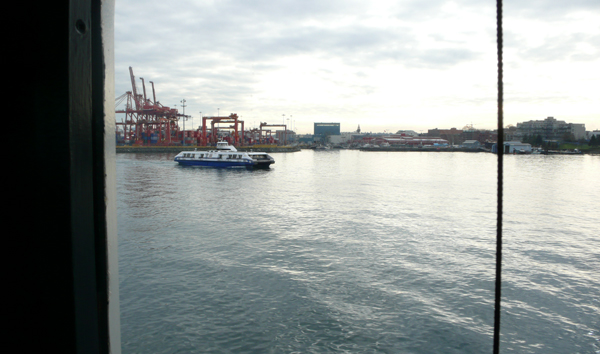
On Monday, SeaBus started its extended hours for the Olympics!
(For visitors who may not know, SeaBus is our ferry service between downtown Vancouver and North Vancouver — yes, our public transit system involves boats!)
The biggest change for the service is 10-minute service using three SeaBuses, every day from 10 a.m. to half-past midnight. It’s a big change because for 33 years, SeaBus has only offered 15-minute service with its two existing vessels. Last year, however, a new SeaBus was built (the Burrard Pacific Breeze!) and is now joining in to boost service for the Olympic period.
I went down to see how everyone was doing with the new timing, and Chris, a supervisor of service delivery, said everyone was adjusting just fine, even though it’s the first time SeaBus has ever changed its scheduled sailings during its lifetime. (Can you believe it?)
And here’s a few more photos and tidbits from behind-the-scenes at SeaBus.
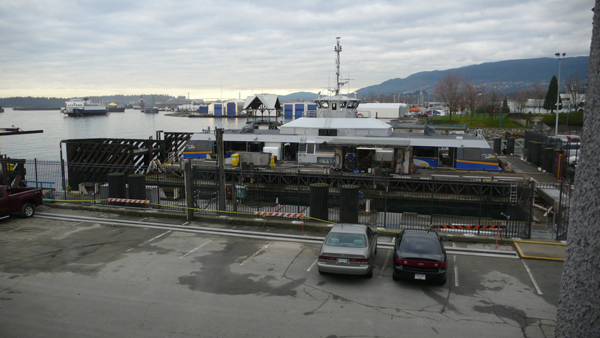
With all three SeaBuses in action, the SeaBus can now carry more passengers overall during the Games—although each SeaBus is limited to only 399 riders per boat, in accordance with Transport Canada rules. (Taking 400 passengers or more would mean the boats would be reclassified by Transport Canada, and major safety modifications would need to be made to each vessel.)
And passengers are counted using the turnstiles, if you’re curious!
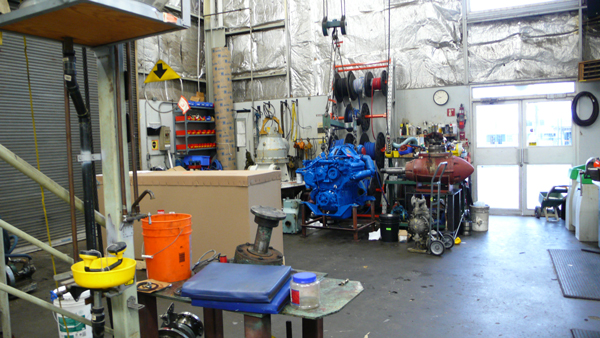
We went around the SeaBus offices, and Chris pointed out the work of the engineers, who help keep SeaBus going by constantly keeping the engines working and more. “It’s like a car that you take out every day, except you do it for thirty years,” said Chris.
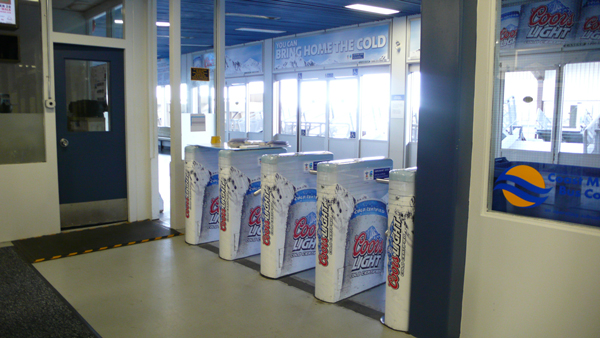
In the north SeaBus terminal, you can see that Coors Light has wrapped the station in their ads. It kind of matches the sunlight coming in this photo.
I asked if they had noticed anything different with SeaBus since the Olympics had started. Chris said that since the Canada Line opened, many more people with luggage have shown up on SeaBus, and more tourists are of course coming.
For the Games, it will be especially busy owing to those headed south to the Olympic celebrations in downtown Vancouver, and those headed north to Lonsdale Quay, connecting with the Olympic bus network to get to Cypress Mountain.
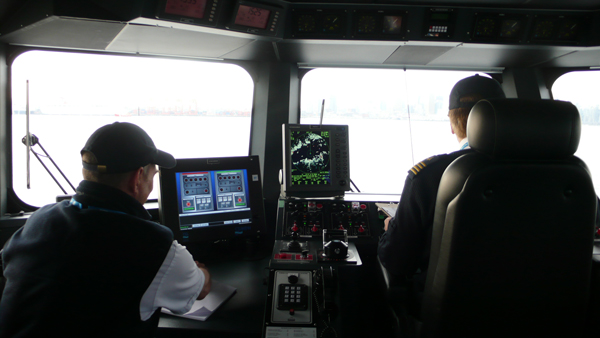
The newest SeaBus, the Burrard Pacific Breeze, joined the two older SeaBuses in service at 10 a.m. I went up to the wheelhouse for the first journey—that’s the room where the captain and first mate sail the ship. (Four staff can be found on every SeaBus—in addition to the captain and first mate, two marine attendants are down below with the passengers.)
Interestingly enough, the SeaBuses take a diagonal route between the two terminals, to minimize the wake, the waves that they create behind them. The wake can have a rocking effect on nearby vessels, and so care is taken to keep the SeaBus’s wake low.
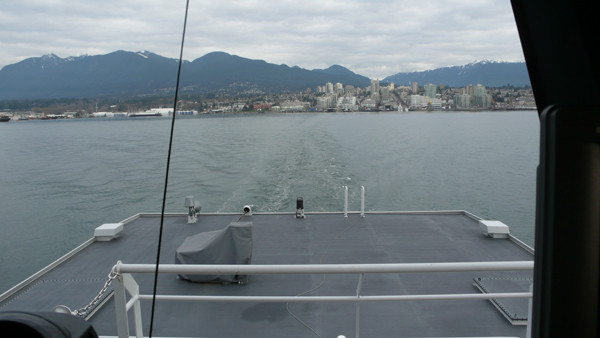
However, the Burrard Pacific Breeze was designed to minimize its wake, so it can sail at faster speeds without creating big waves! Look at the small trail left behind!
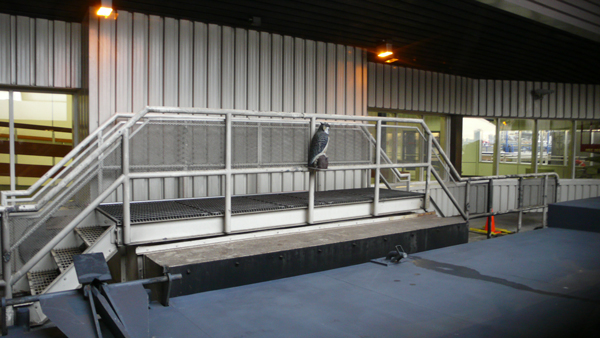
Here’s a few assorted photos to finish of this post. There’s a fake owl installed at the north SeaBus terminal to keep away the pigeons! Apparently it works very well.
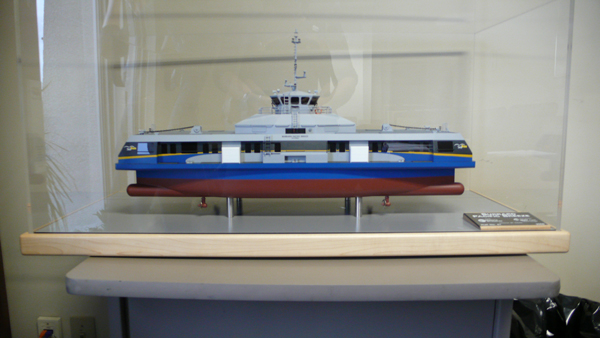
I spotted this model of the Burrard Pacific Breeze in the SeaBus administration offices! Victoria Shipyards had it made for SeaBus.
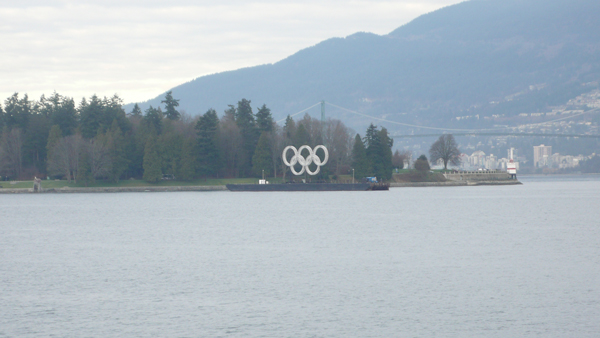
We also spotted Olympic rings in Burrard Inlet, which apparently light up at night.
OK, that’s it for now – I’ll catch up with SeaBus again during the Games, to see how things are going!






I’m curious. With three vessels I’m wondering about the docking arrangement. The boats used to use whichever side of the dock was favourable with regard to winds and currents. With three vessels, are they still doing this (I assume there will always be one at sea if the timings are correct.
The two older vessels are fantastic boats and I really hope Translink keep them both. They’re workhorses, can handle any weather and were built for reliability and speed of loading and unloading.
Do you have any stories on SeaBus rescues or other events? Here’s one:
A person I work with was on the SeaBus from North Van to Vancouver on his way home via the West Coast Air. Half way across, the SeaBus diverted to assist in the rescue of passengers from a West Coast Air flight that had crashed on take-off. He was actually in the rescue boat with SeaBus staff helping pull people off the aircraft and out of the water.
When SeaBus docked, he simply went to West Coast Air and got on the next flight and carried on.
I’ll ask about the docking arrangement. I think you are right about one being at sea though.
The two older vessels are definitely wonderful boats, but after thirty-plus years, they are just getting quite fatigued and harder to maintain.
For example, here is a past comment from one of our fleet management staff regarding the older SeaBuses, explaining why simply refitting the boats continually is not exactly the solution:
Also, love the SeaBus rescue story! I will ask the folks at SeaBus if they have any more rescue stories to share :)
I’d also like to see the two older vessels being kept, but what can we do to counter the aging of them? On the new vessel, I noticed improvements! Some are: smoother and quieter ride (no more bum-vibrating :P), more comfy seating, a TV, and new LED signs over the doors, lots of space to maneuver, different routes you can take to go to the exit. A couple of negative points are: the doors are a little on the slow side when opening, the emergency procedure announcement plays like four times instead of once (kind of annoying :P).
Oh, and the new vessel smells nice :D
I know — we were commenting that it still has that new boat smell!